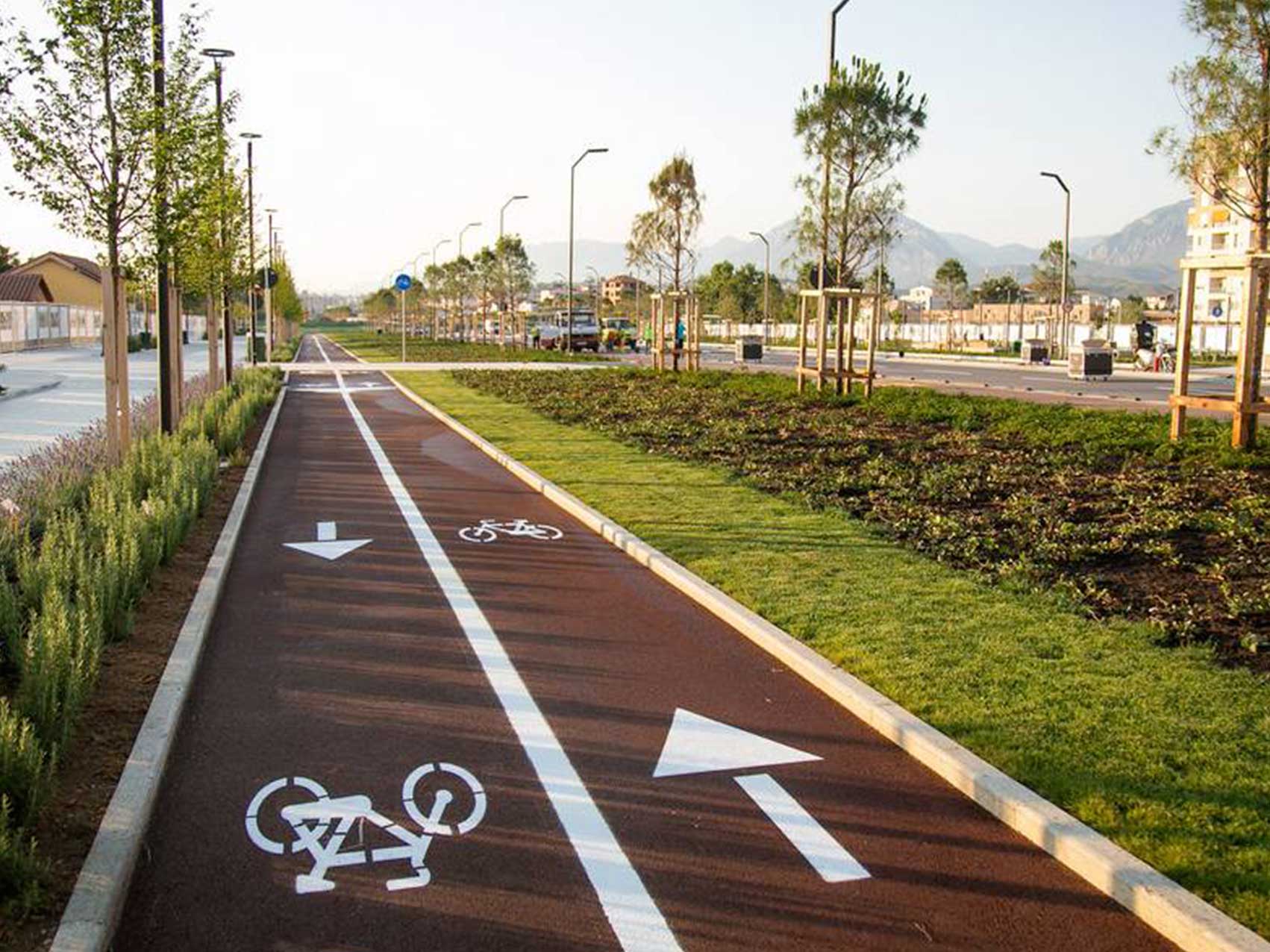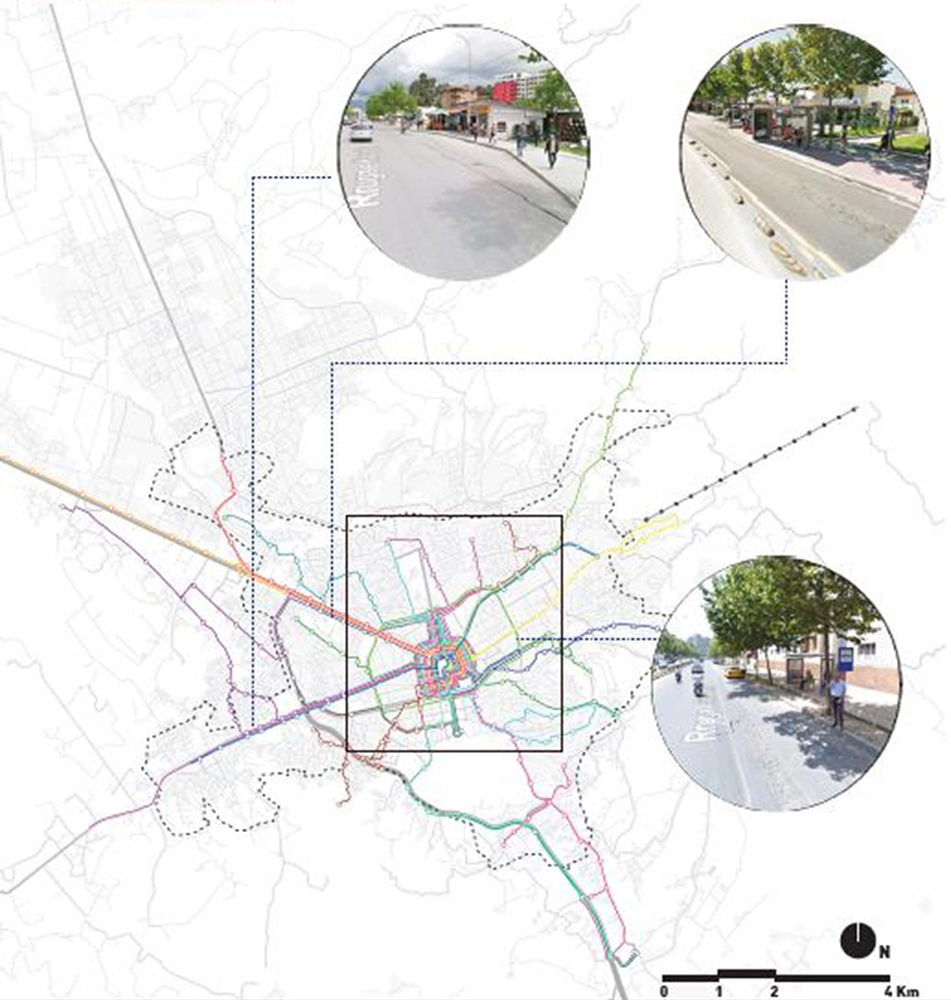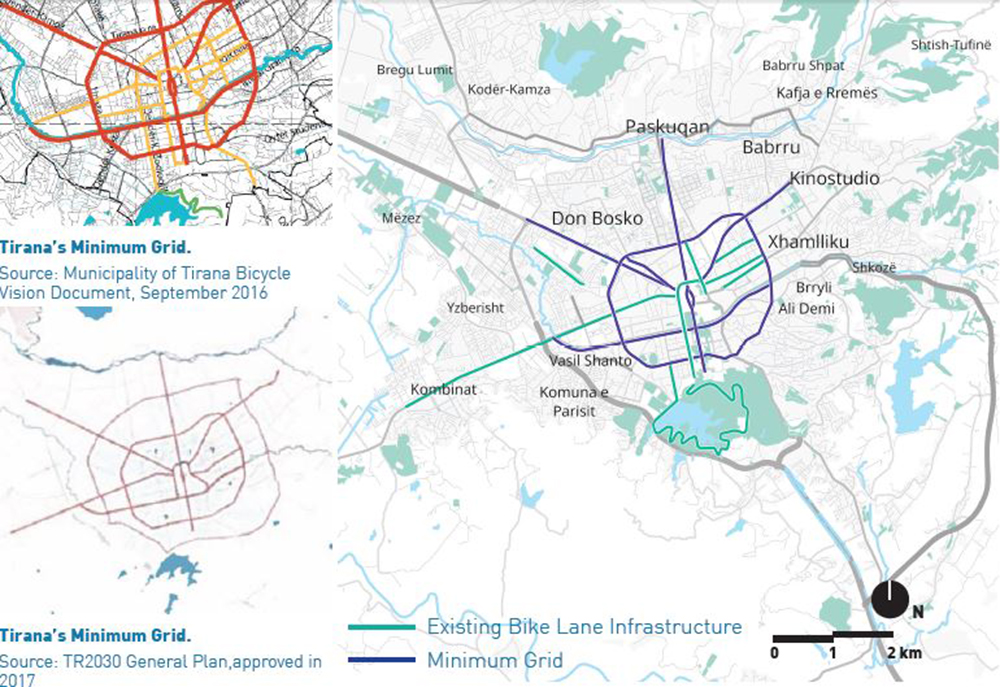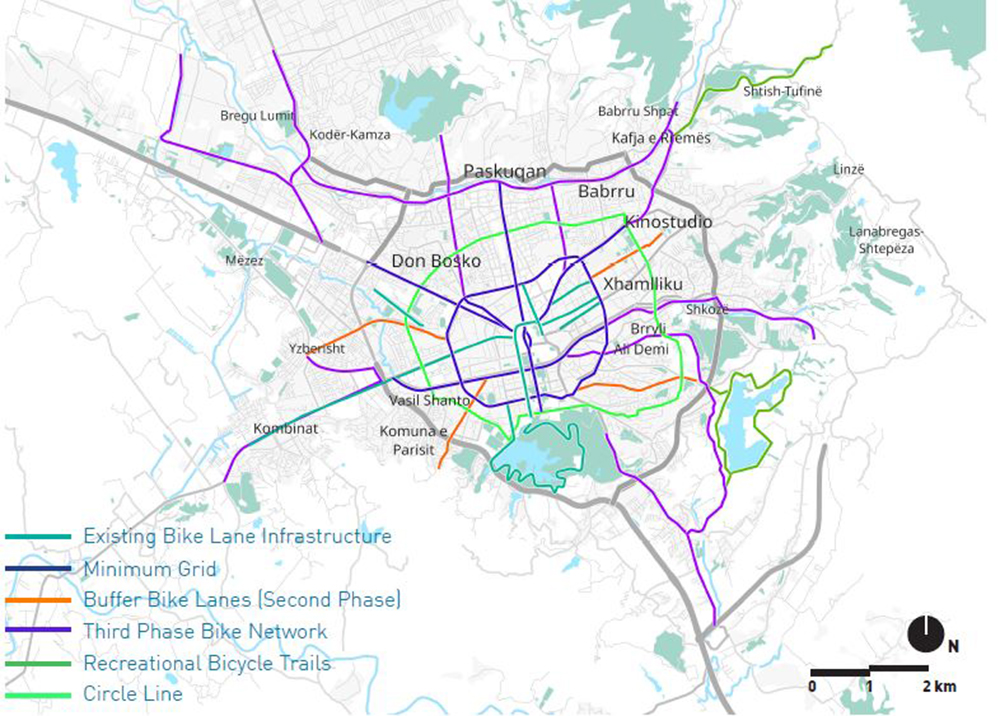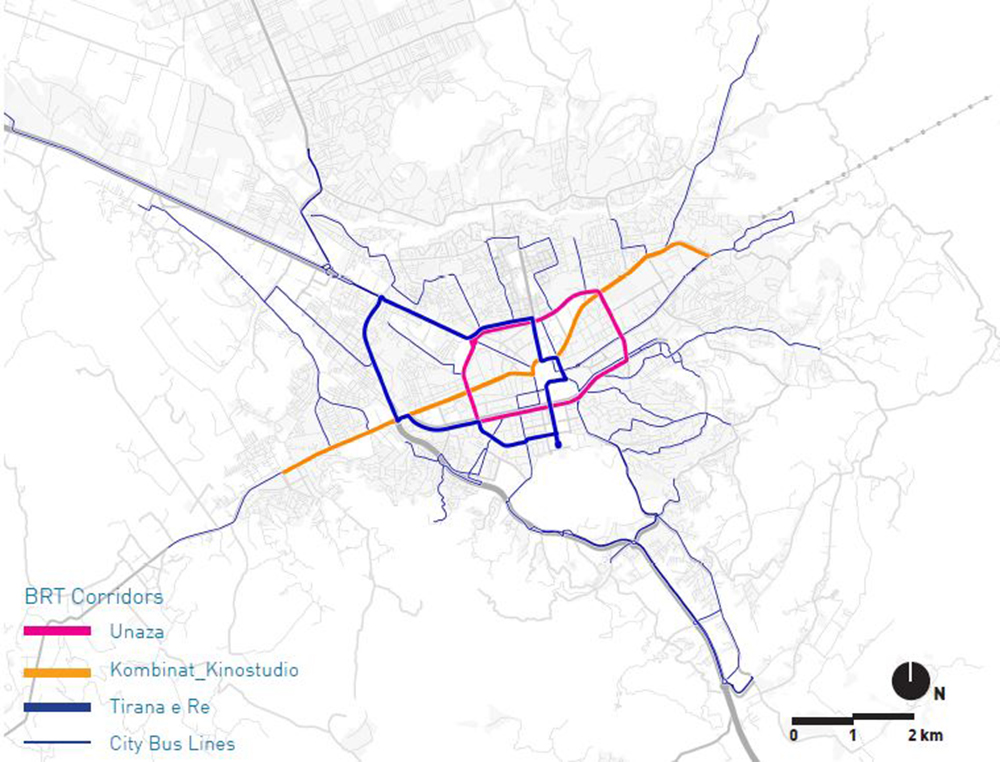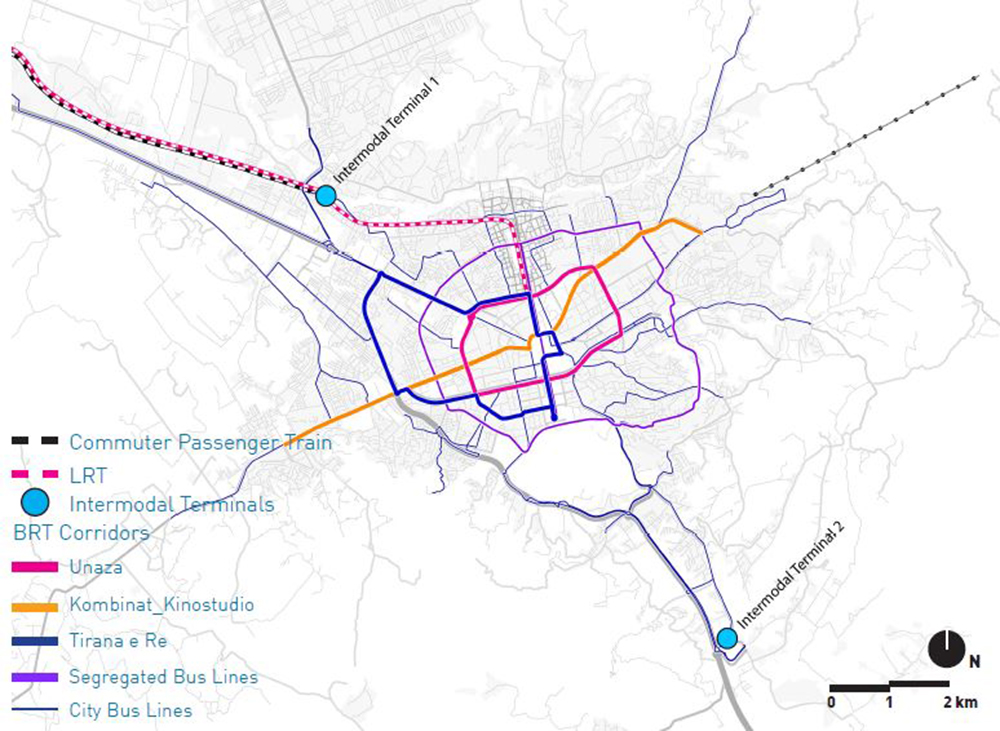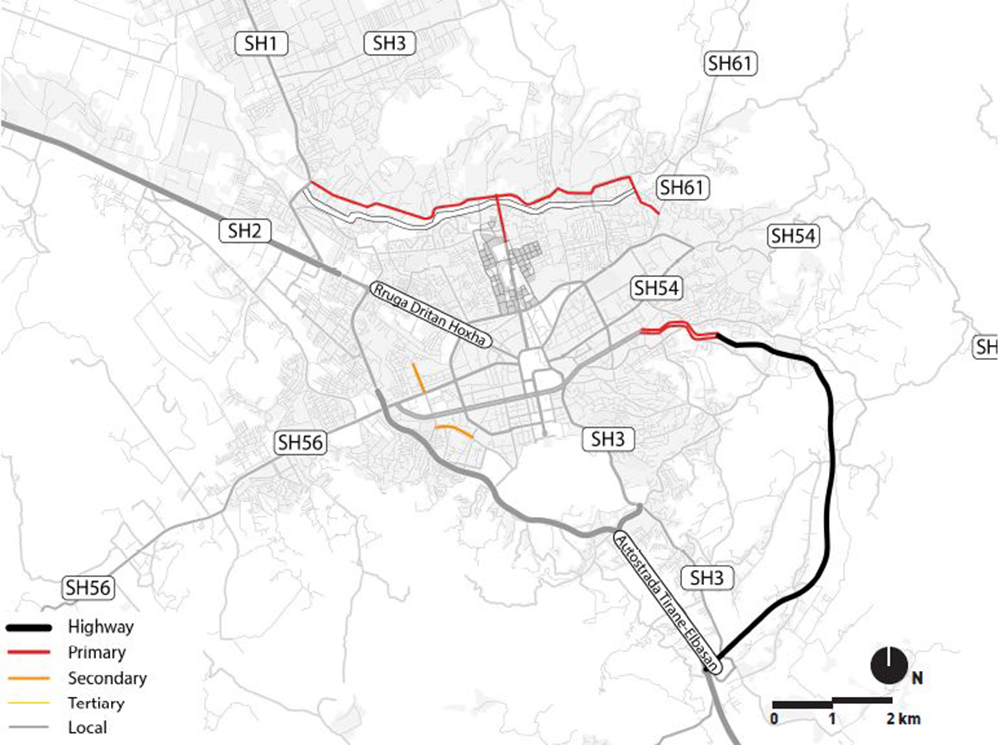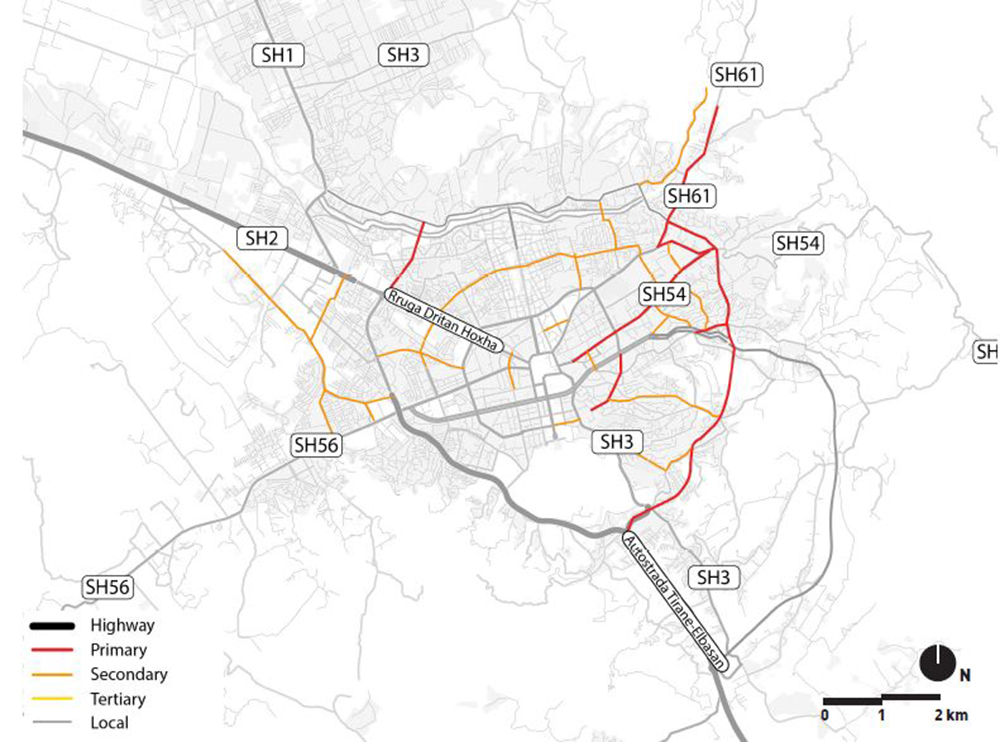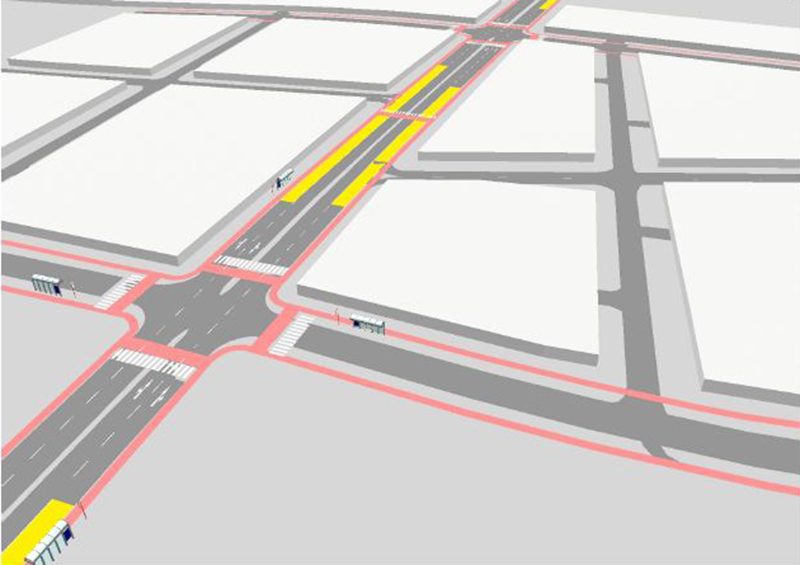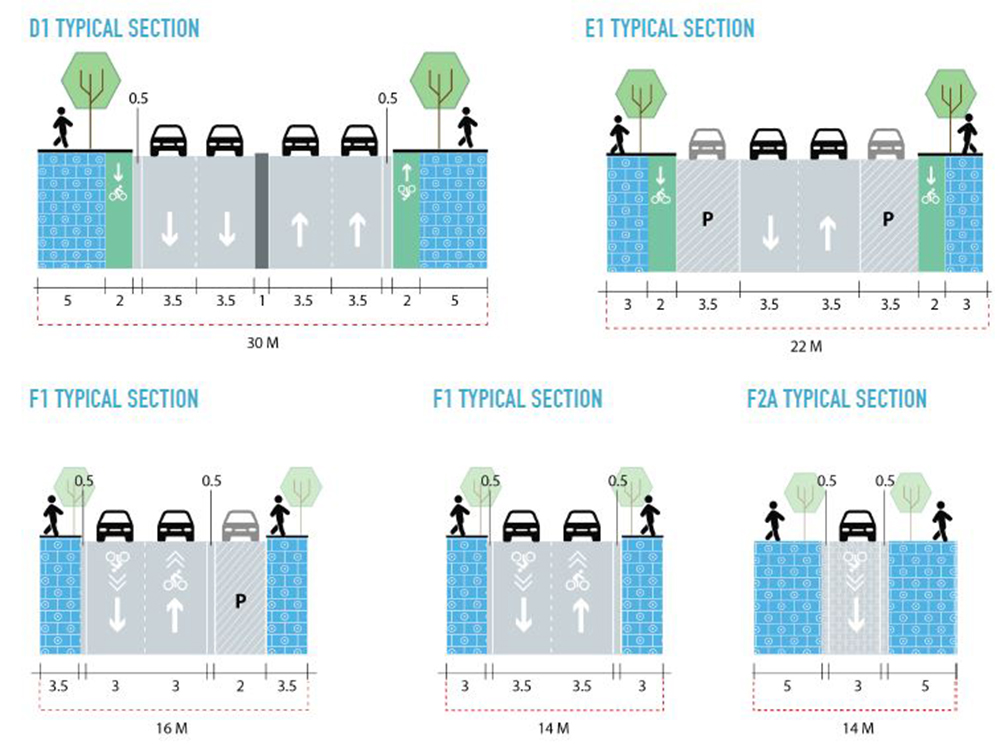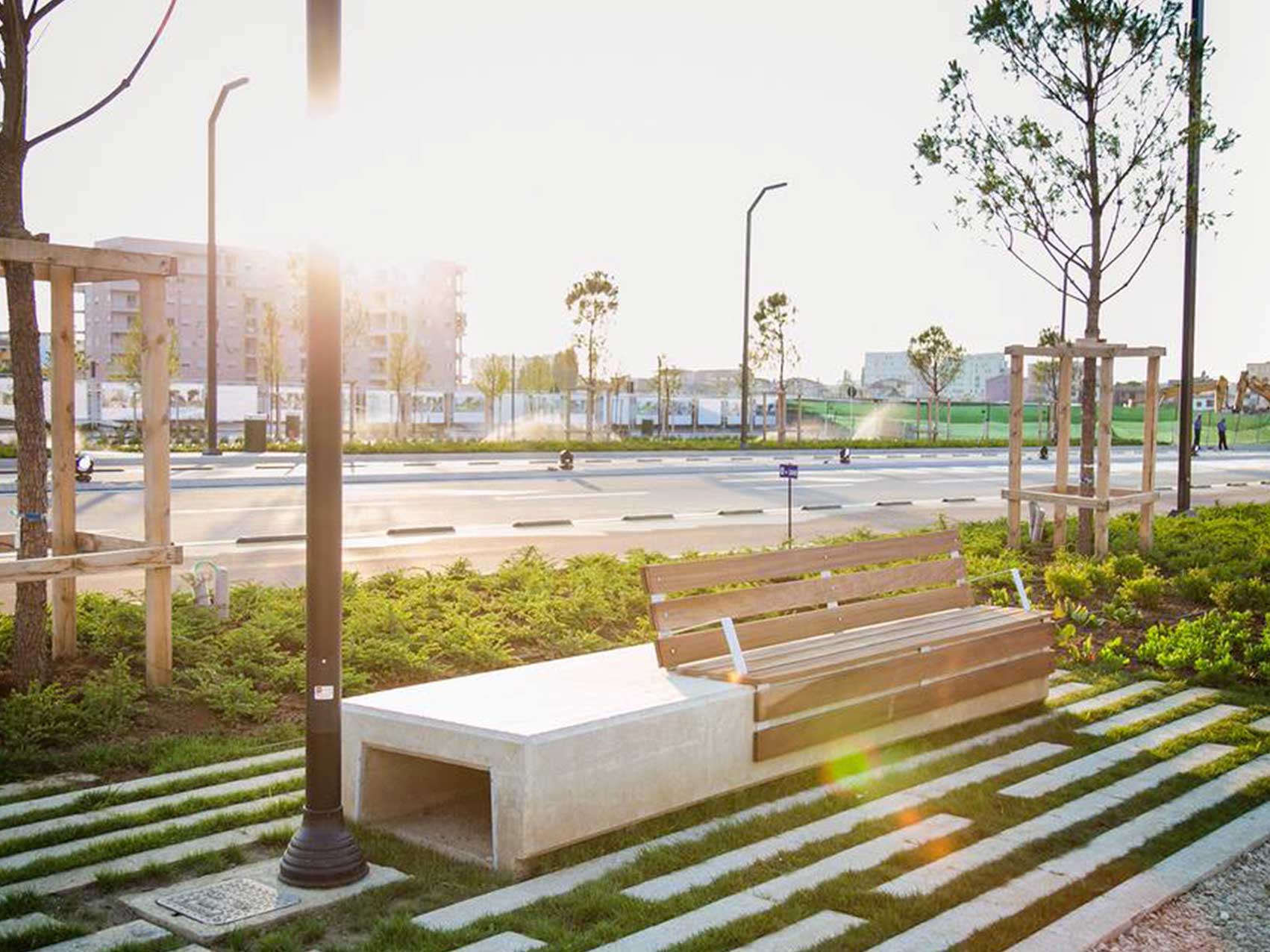Tirana Boulevard Masterplan
Tirana
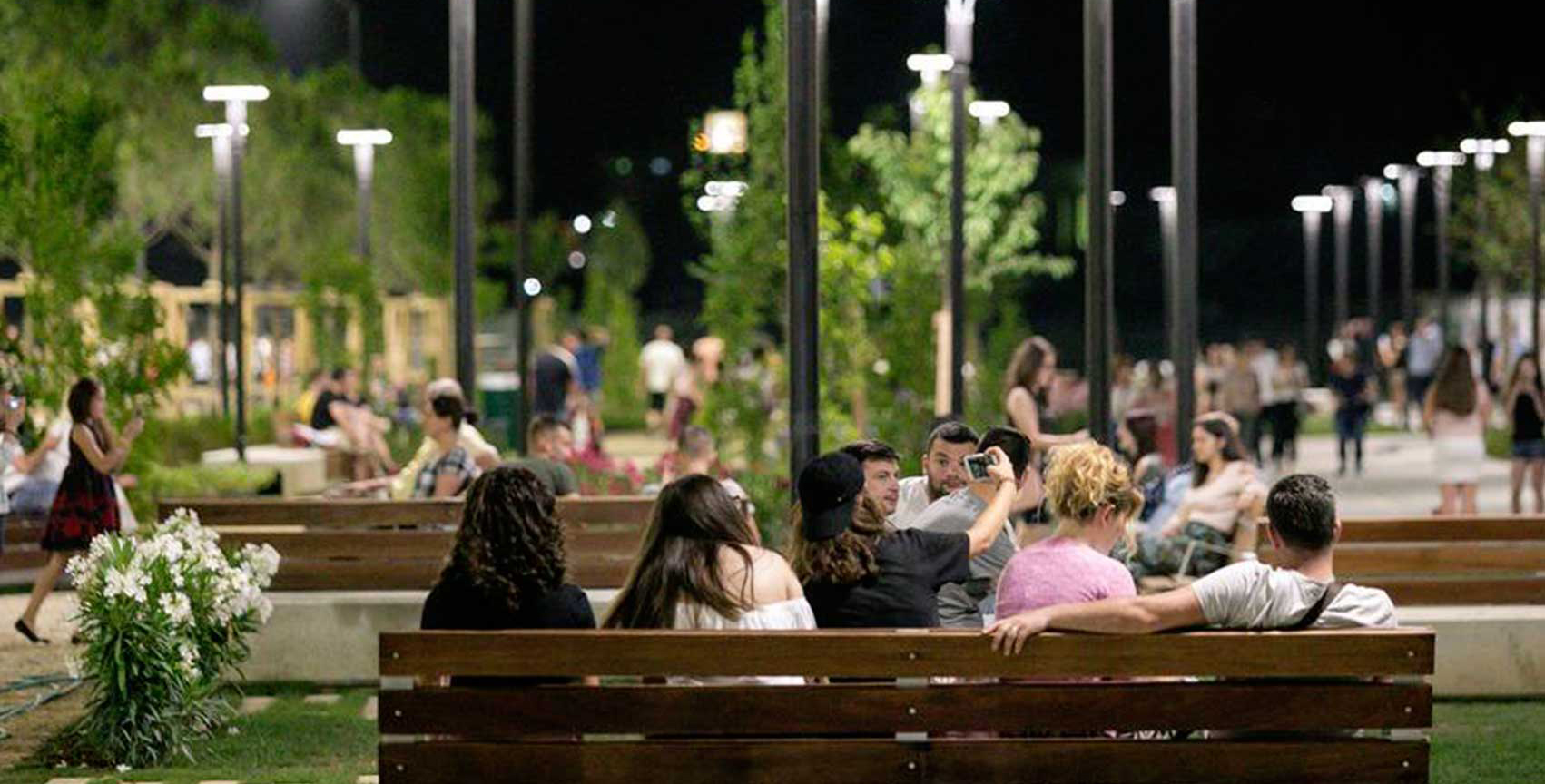
The North Boulevard Masterplan covers a large area in the centre of Tirana and hosts a rich mix of functions, including offices, universities, residential, and commercial buildings.
Considering the importance and size of the Boulevard in relation to the city structure, an intellectual approach of the area has been essential over the years towards the condition of the infrastructure, the demographic trend and the flows of people arriving in the city of Tirana through the numerous multimodal connections.
Today, in Tirana, there is a system of 16 urban and 9 suburban bus lines. Despite the system serving the entire city, an overlapping of most of the lines in the centre actually makes the overall performance quite inefficient.
The Tirana Department of Transport has commissioned a feasibility study for BRT lines. For the 2030 scenario, the TR2030 Master Plan provides for the implementation of a circular line BRT service as well as an improved service for the south-east of the city, which is currently not covered.
In addition, a Tirana-Durres connection is planned in the form of a passenger train for tourists arriving from the port of Durres to the multimodal hub, from where they will be able to reach the city centre by a variety of options.
Location
Tirana
Client
Grimshaw
Main expertise
Mobility Consultancy; Transport and Traffic Modelling
PROJECT HIGHLIGHTS
- 300 km of railway line
- 16 urban and 9 suburban lines
- LRT and BRT lines
Project gallery
Our contribution
An analysis conducted by MIC-HUB for the North Boulevard area of Tirana highlighted the need to create a flexible, wheeled Tirana-Airport connection in place of the planned LRT line.
Besides being more flexible in terms of future routing capabilities, BRT lines require less investment, have less infrastructural impact and offer a greater field of applicability, while proving comparable to LRT’s in terms of capacity.
Furthermore, it is planned to create cycle routes in the most populated neighbourhoods and to extend the cycle network out towards the suburbs of the city. The network can also be extended towards the north of the city by introducing recreational cycle paths through the Metrobosco area and further away towards the delta of the river, to create recreational paths for the city’s inhabitants.
In 2025, with the implementation of the new BRT lines, 60% of the city’s population will be covered by public transport and, with the construction of the new LRT line (imagining a flexible system), this figure will rise to almost 80%.
